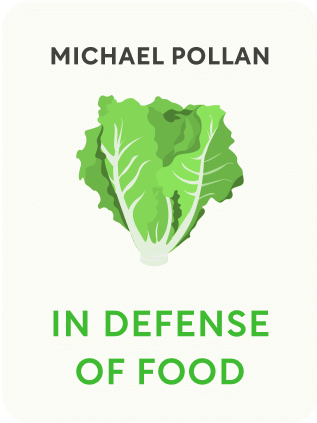

This article is an excerpt from the Shortform book guide to "In Defense of Food" by Michael Pollan. Shortform has the world's best summaries and analyses of books you should be reading.
Like this article? Sign up for a free trial here .
What is the difference between the Omega-3 vs. Omega-6 fatty acids? What functions do they perform in the body?
The main difference between the Omega-3 vs Omega-6 fatty acids is in the location of double bonds. Function-wise, Omega-3 fatty acids are essential for brain development and reducing anti-inflammatory response. Omega-6 fatty acids, on the other hand, are good for skin and lowering blood cholesterol, but they also promote an inflammatory response in the body.
Learn about the difference between the Omega-3 vs Omega-6 fatty acids, their main food sources, and what functions they perform in the body.
Essential Fatty Acids: Omega-3 vs. Omega-6
What’s the difference between Omega-3 vs. Omega-6 fatty acids? Omega-3 fatty acids are found in plant leaves and may be the most essential nutrient of all. They are important for neurological development and processing, vision, cell wall permeability, glucose metabolism, and reductions in the inflammatory response. Omega-3s are swift and malleable, which also makes them more perishable and not suitable for long-term storage.
The food industry does what it can to remove omega-3s from products to increase their shelf life. Breeders look for crops low in omega-3s, and nutritionism has helped eliminate omega-3s from the diet through its push of seed oils and hydrogenated fats.
Omega-6 fatty acids, on the other hand, are found in durable seeds. These fatty acids are dense and slow, which make them more suitable for storage. They promote the storage of fat in the body, cell wall density, clotting, and inflammation.
Both types of fatty acids take up residence in the cell membranes and require enzymes to help them perform their functions. Because of this, omega-3s and omega-6s compete for space at the cellular level and for enzymes. Therefore, the ratio of the two within the body may be more significant than the quantity of either alone.
In the Western diet, you’re getting more omega-6s from grains and animals eating grains instead of plants. The move from saturated fats to seed oils and margarine thanks to the lipid hypothesis was a tactical move toward omega-6s. These days, the typical ratio of omega-6s to omega-3s in the body is 10:1.
How Omega-3s Affect Health
Omega-3s are negatively correlated with heart disease. As the amount of omega-3s increase, the risk of heart disease decreases. Studies show that good amounts of omega-3s in the body can reduce the risk of heart disease by a third.
A few theories exist about the beneficial effects of omega-3s.
- They seem to accumulate in heart tissue and regulate heart rhythms, thereby reducing arrhythmias.
- The anti-inflammatory response may reduce heart disease, as well as arthritis and Alzheimer’s Disease.
- Their role in making the cellular structures more permeable improves cell absorption and metabolism, which assists in breaking down glucose faster and with less insulin. This gives the body the energy it needs faster and reduces hunger.
- Because the brain is mostly fat, the anti-inflammatory response of omega-3s may play an important role in regulating psychological functions, thereby reducing depression, suicidal ideation, homicidal ideation, and learning disorders.
- A 1980 study showed that babies fed a formula fortified with omega-3s tested better in vision and brain development than babies fed a formula fortified with omega-6s.
What This Means for You
Omega-3 vs Omega-6 fatty acids exist in a zero-sum relationship. So simply fortifying a diet with more omega-3s may be futile if the amount of omega-6s remains the same or high. The current ratio favoring inflammation-inducing omega-6s explains the billions of dollars Americans spend a year on non-steroidal anti-inflammatory drugs. Omega-6s also strengthen cellular walls, making absorption more difficult, thereby slowing metabolism. The only way to combat the negative effects of omega-6s is to eat a diet higher in green plants and lower in seed-based foods.

———End of Preview———
Like what you just read? Read the rest of the world's best book summary and analysis of Michael Pollan's "In Defense of Food" at Shortform .
Here's what you'll find in our full In Defense of Food summary :
- Why eating a Western diet is killing you
- How the rise of low-fat foods contributed to the rise of obesity and diabetes
- What to eat if you want to restore a healthy relationship with your food






